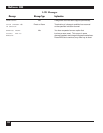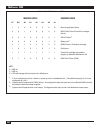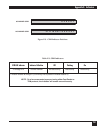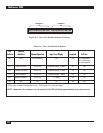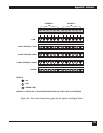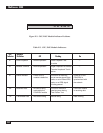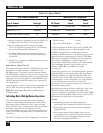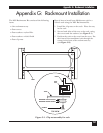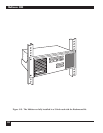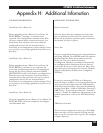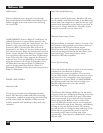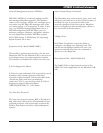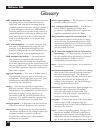
Appendix F: Device Applications
245
Extended WANG Support Feature (WANGX)
The extended WANG support feature (WANGX)
provides special buffer control, flow control, and
code levels for WANG 2200 computer systems
support. These systems include 2200 UP, 2200 MUP,
and 2200 LVP all using the 2236 MXD terminal
processor and the 2236 DE interactive terminal as a
standalone device or with any WANG printer slaved
to it.
Communications are serial asynchronous, 11-bit
code (1 start bit, 8 data bits, 1 odd parity bit, and
1 stop bit). The data rates normally used for
WANGX channels are 300, 600, 1200, 2400, 4800,
and 9600 bps.
To activate WANGX for a port, select WANGX
buffer control and flow control using the Channel
Characteristics Menu. A port using WANGX buffer
and flow control will be transparent to the standard
X-ON/X-OFF characters (DC1 and DC3).
The following points should be noted about ports
using WANGX buffer and flow control:
• The View Channel Configuration display will
indicate WANGX buffer and flow control for
each port as applicable.
• Ports using WANGX buffer and flow control
cannot use the Tandem Computer or Smooth
Scroll features.
• Autobaud Rate Detection (ABR) (selected from
the Data Rate Menu) does not operate on
WANGX ports.
• WANGX ports should be configured in 9-level
code, odd parity.
Tandem
Tandem non-stop computer data flow operation
requires the use of a signal called T-Pause.
T-Pause is a control signal on pin 12 of the Tandem
interface. This flow control signal is used as a
function in response to remote printing terminal
signals ready, abort, or temporary buffer full. The
Multiserver unit will pass the T-Pause signal when
yes is selected for Tandem in the Channel Features
Menu (see Table 9-11).
Also, when Tandem computer support is enabled,
DTR (pin 20) from the terminal is inverted and
output as DSR (pin 6) to the host. However, the
Multiserver unit provides normal DTR flow control
response to the terminal.
Call your vendor if you need cables to support
Tandem computers. They will need to be custom-
made. If you wish to build your own cables, use the
pin assignments in Figure B-13.
To enable Tandem computer support for a port, set
the following configuration using the Channel
Characteristics Menu and the Channel Features
Menu (see Section 9.3, Asynchronous Channels):
• EIA Control Enable(d) at Host and
Terminal ends
• Flow Control DTR at Terminal end
• Buffer Control CTS at Host end
• Tandem Yes at Host end
HP ENQ/ACK
The Multiserver can support Hewlett-Packard
HP3000 View systems using type 26XX display
stations operating under term type 10. To support
them, the Multiserver unit emulates the HP
ENQ/ACK pacing mechanism. Remote spooling for
HP2631 and HP2635 printers (term type 19) is also
supported.
The HP ENQ/ACK protocol is available to any port
from the Channel Features Menu. When a Host end
port (with HP ENQ/ACK option = yes) receives an
ENQ poll following a block of data, it immediately
emulates the remote terminal by responding with
its own ACK. It then passes ENQ along to the
terminal.
After outputting the data, the remote Multiserver
unit buffers any additional data until the terminal
sends an ACK or a 10-second timer expires. When
the ACK is received, the remote Multiserver unit
forwards data to the terminal (but does not forward
ACK to the host).
To enable HP ENQ/ACK, set the following
configuration using the Channel Characteristics
Menu and the Channel Features Menu:
Appendix F: Device Applications




